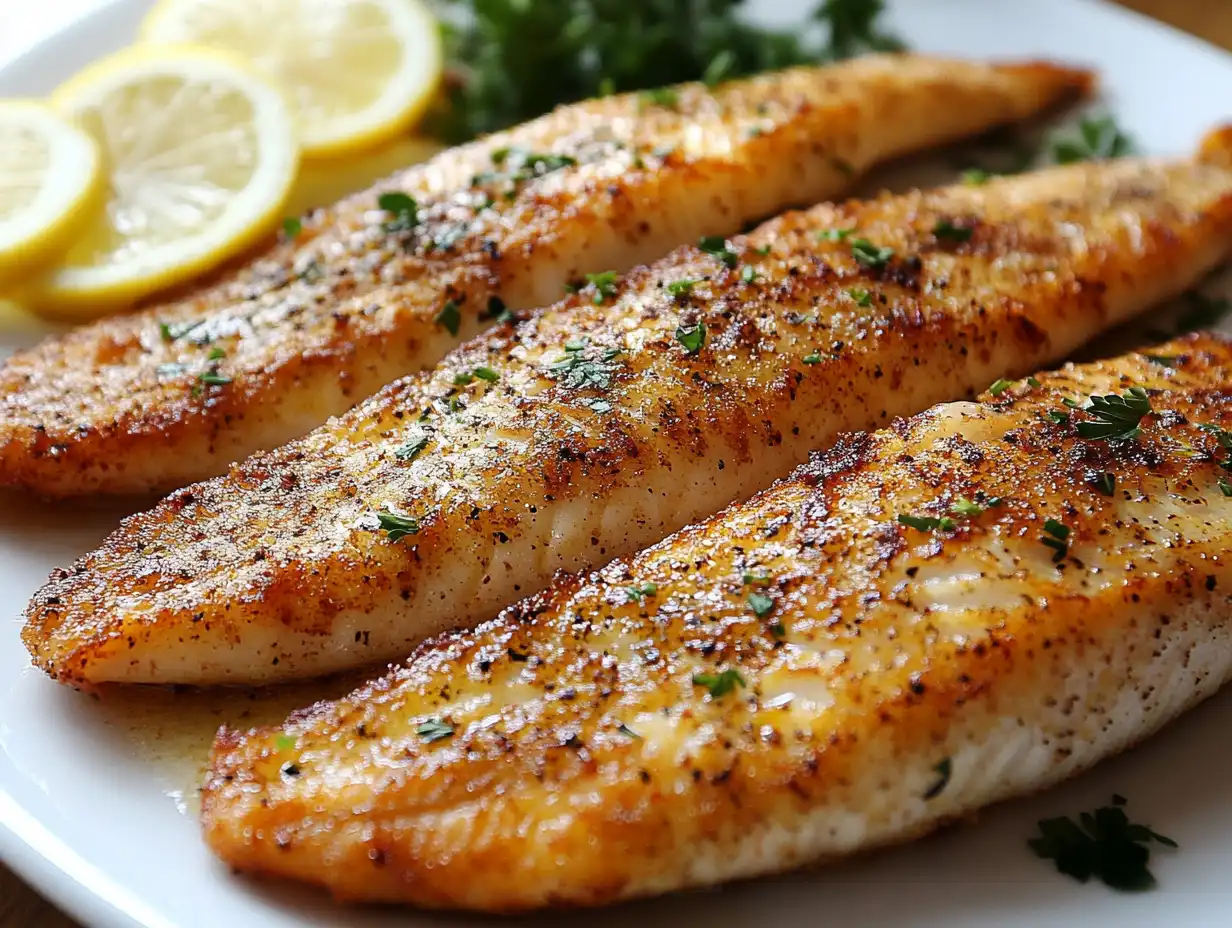Do you eat the skin on steelhead trout? This popular fish, known for its delicate flavor, versatility, and vibrant pink flesh, has become a staple in kitchens worldwide. Whether grilled, baked, or pan-seared, steelhead trout adapts beautifully to various cooking methods. But when it comes to enjoying this fish, one question often arises: is the skin meant to be eaten?
Table of Contents
Understanding Steelhead Trout
What Is Steelhead Trout?
Steelhead trout is a remarkable fish species that belongs to the same family as salmon. What sets them apart is their life cycle. While they start life in freshwater streams, they venture into the ocean before returning to freshwater to spawn. This migratory lifestyle gives them a firm, lean texture and a flavor that’s both rich and mild. For more about the difference between rainbow trout and steelhead, visit this guide.
Think of steelhead trout as the adventurous cousin of rainbow trout they’re technically the same species, but steelhead trout grow larger and have a more intense flavor due to their oceanic escapades.
Nutritional Benefits of Steelhead Trout
Steelhead trout is a powerhouse of nutrients. Packed with protein, it’s a great choice for muscle building and repair. But what really steals the show is its omega-3 fatty acids. These healthy fats are fantastic for heart health, brain function, and even reducing inflammation. Explore how steelhead trout compares to salmon in terms of nutrition and taste.
Here’s a fun fact: eating just a 3-ounce serving of steelhead trout can cover a significant portion of your daily omega-3 requirement. Plus, it’s loaded with essential vitamins like B12 and D.
Unique Characteristics of Steelhead Trout Skin
Now, about the skin this is where things get interesting. The skin of steelhead trout is thin and delicate, unlike some fish with thicker, chewier skins. When cooked properly, it transforms into a crispy, flavorful layer that complements the tender meat underneath. It’s a texture lover’s dream! For tips on the best methods for cooking trout, check out this guide.
“The best way to describe steelhead trout skin is that it’s like a natural potato chip coating for your fish.”
Is It Safe to Eat the Skin on Steelhead Trout?
Potential Risks of Eating Fish Skin
Safety is the top concern when considering whether to eat fish skin. Fish skin can sometimes contain traces of contaminants like mercury or polychlorinated biphenyls (PCBs) due to pollution in their habitats. However, steelhead trout is often farm-raised in controlled environments, reducing exposure to these harmful substances.
Does this mean you can eat the skin without worry? Well, not entirely. Always check the source of your fish. Look for labels that indicate it’s sustainably farmed or wild-caught in clean waters.
How Steelhead Trout Skin Compares to Other Fish Skins
Steelhead trout skin stands out for being thinner and less oily than salmon skin, making it a great option for those who find salmon too rich. Its mild flavor and delicate texture allow it to crisp up beautifully, offering a lighter, less greasy crunch. Unlike thicker skins like cod or halibut, it’s quick and easy to cook, pairing well with a variety of seasonings and dishes. This makes it a versatile and approachable choice for enjoying the benefits of fish skin without the heaviness of other varieties.
Addressing Concerns About Contaminants
Concerns about contaminants like mercury or PCBs in fish skin are valid but manageable. Farm-raised steelhead trout from reputable sources are often safer, as they’re raised in controlled environments. Proper cooking methods, such as grilling, baking, or pan-searing at high heat, help eliminate microbes and reduce risks. Additionally, thoroughly cleaning the skin and removing scales before cooking ensures it’s safe to eat. With careful sourcing and preparation, you can enjoy steelhead trout skin confidently, knowing it’s both flavorful and nutritious.
Health Benefits of Eating Steelhead Trout Skin
Nutritional Content in Fish Skin
Fish skin, including that of steelhead trout, is packed with nutrients. It’s rich in collagen, a protein that supports skin elasticity and joint health. Eating the skin gives you a dose of this nutrient, which is hard to find in other parts of the fish.
“Collagen is like the scaffolding for your skin and bones—it keeps everything strong and flexible!”
Omega-3 Fatty Acids and Their Impact on Health
We can’t talk about steelhead trout without singing praises for omega-3 fatty acids. The skin has a concentrated amount of these heart-healthy fats. They’re great for reducing bad cholesterol levels and improving overall cardiovascular health.
Skin Benefits for Digestive Health
If you’ve been ignoring fish skin, you might be missing out on its benefits for your gut. Steelhead trout skin is a good source of natural fats, which can aid in smoother digestion.
Culinary Uses for Steelhead Trout Skin
Cooking Methods for Crisp and Flavorful Skin
Crisping up steelhead trout skin is easier than you think. Start with a clean, dry piece of fish. Heat a non-stick pan with a little oil and place the fish skin-side down. The key is patience let it cook undisturbed until the skin is golden and crispy. Flip it briefly to cook the flesh, and you’re done.Whether you’re preparing a classic recipe or experimenting with flavors, try this delicious steelhead trout recipe for inspiration.
Tip: Sprinkle some salt on the skin before cooking. It’s the secret to achieving that irresistible crackly texture!
Pairing Steelhead Trout Skin with Complementary Flavors
Steelhead trout skin pairs beautifully with fresh, citrusy flavors like lemon or lime, which brighten its savory richness. Herbs such as dill, parsley, or cilantro add an earthy, aromatic touch, while sauces like chimichurri or soy-ginger glazes provide bold contrasts. A sprinkle of smoked paprika or a drizzle of honey enhances the skin’s crispiness and flavor. Pair it with creamy sides like mashed potatoes or fresh salads for a perfect balance of texture and taste. With its versatility, steelhead trout skin can adapt to a variety of dishes and flavor profiles effortlessly.
Popular Recipes Featuring Steelhead Trout Skin
Steelhead trout skin is a versatile ingredient that can elevate many dishes. Pan-seared steelhead trout fillets with crispy skin are a classic favorite, pairing well with roasted vegetables or salads. For a creative twist, make crispy fish skin chips by seasoning and baking or frying the skin perfect as a snack or appetizer with dips like aioli or tartar sauce.
Another popular option is a steelhead trout bowl topped with crispy skin strips, avocado, pickled veggies, and a tangy dressing, offering a mix of flavors and textures. You can also use crispy skin in sushi rolls, wraps, or as a garnish for soups and noodle dishes. Whether it’s the star of the plate or a crunchy addition, steelhead trout skin adds flavor and texture to any meal.

Common Problems and Solutions When Preparing Steelhead Trout Skin
How to Avoid Overcooking or Burning the Skin
One of the most common mishaps with steelhead trout skin is overcooking it. You know that feeling anticipating perfectly crispy skin only to end up with a burnt, bitter layer. Yikes! The trick is to control your heat. Start with medium-high heat to crisp the skin, then lower it slightly as it cooks through.
Pro Tip: Use a splatter guard if you’re pan-searing; it keeps your kitchen tidy while letting the fish cook evenly.
Tips for Cleaning and Prepping the Skin
Another challenge is ensuring the skin is properly cleaned. Leftover scales can make the experience unappetizing. Use the back of a knife or a fish scaler to gently scrape off the scales under cold running water. Pat the skin dry with a paper towel to ensure it crisps up beautifully during cooking.
“Dry skin equals crispy skin—it’s as simple as that!”
Solutions for Eliminating Fishy Odor in the Skin
Some people avoid fish skin because of the smell, but there are ways to fix that. Soaking the fish briefly in milk or lemon juice before cooking can neutralize any strong odors. Additionally, using fresh herbs or aromatics like garlic and ginger during cooking can mask any lingering fishy scents.
Steelhead Trout Skin in Global Cuisines
Traditional Dishes Using Fish Skin
Around the world, fish skin has been embraced as a culinary delight. In Japanese cuisine, crispy fish skin is often served as an appetizer or topping for sushi rolls. Similarly, Scandinavian cultures incorporate fish skin into broths and stews for added depth of flavor.
It’s fascinating how what might be discarded in one culture is considered a delicacy in another.
Unique Preparations Across Different Cultures
Each cuisine has its own twist on using fish skin. For instance, in Chinese cooking, fish skin is sometimes deep-fried and seasoned with a mix of salt, pepper, and five-spice powder. The result? A savory, crunchy snack that rivals potato chips.
In Peru, ceviche occasionally features thin, crispy fish skin as a garnish to add texture to the tangy, citrusy dish.
The Role of Fish Skin in Sustainable Cooking
With the growing emphasis on sustainability, utilizing fish skin is a fantastic way to reduce waste. Instead of discarding this nutrient-rich part of the fish, chefs worldwide are finding creative ways to use it. Whether it’s blending it into pâtés or frying it into chips, fish skin is becoming a symbol of eco-conscious cooking.
Alternatives to Eating Steelhead Trout Skin
Using the Skin in Stocks and Broths
If eating the skin isn’t your thing, you can still harness its flavor. Boiling the skin along with fish bones and vegetables creates a rich, gelatinous broth perfect for soups and sauces.
Repurposing Skin for Pet Treats
Have a furry friend at home? Fish skin makes for an excellent natural treat for dogs and cats. Just dehydrate the skin, and you’ve got a crunchy, protein-packed snack they’ll love.
Composting Fish Skin for Environmental Benefits
Even if neither you nor your pets are fans of fish skin, don’t toss it out. Add it to your compost pile! Fish skin is rich in nutrients and can contribute to creating high-quality compost for your garden.
FAQs About Eating Steelhead Trout Skin
Can You Eat Steelhead Trout Skin Raw?
Yes, but with caution. Eating raw fish skin is safe only if the fish is fresh, properly cleaned, and sourced from a reliable supplier. Otherwise, it’s best to cook the skin to avoid any potential health risks.
How Do You Remove Scales Before Cooking?
Removing scales is simple. Use a scaler or the back of a knife, scraping from tail to head under running water. Make sure to rinse thoroughly to remove any stray scales.
What Are the Signs of High-Quality Steelhead Trout Skin?
Fresh, high-quality steelhead trout skin should be firm, shiny, and free from discoloration. A slimy texture or strong fishy odor could indicate it’s past its prime.
Conclusion: Should You Eat Steelhead Trout Skin?
So, do you eat the skin on steelhead trout? Absolutely if it’s sourced properly and cooked well. The skin offers a crispy, flavorful addition to your meal while packing a nutritional punch. With its omega-3s, collagen, and delightful texture, it’s worth a try for anyone curious about elevating their seafood experience.
If you’re hesitant, start with simple techniques like pan-searing to explore its potential. Who knows? It might become your favorite part of the fish. Whether you savor its crunch or use it creatively, steelhead trout skin is a hidden gem waiting to be enjoyed!

